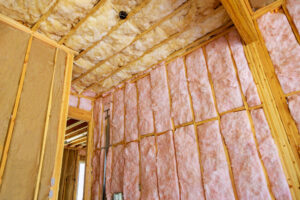How to Do a Cocoon Insulation
Last updated on March 16th, 2024 at 02:10 pm
By: Muna wa Wanjiru
If your home is freezing cold in the winter and blistering hot in the summer, then you need an effective insulation system for your home. Many homes have old insulation system or no insulation at all. Old insulation system looses some or complete effectiveness with passing years. There are many different types of insulation systems are available, cocoon insulation is one them.
Heat enters in or out of your home walls through cracks and crevices around electrical sockets, windows, light fixtures and cracks at wall –ceiling junction. Ordinary insulation develops cracks after some years, which allows air to pass through, which destroys the insulating ability of home.
Much insulation available in market is hazardous to environment as they are made up some compound that releases some gases. These emitted gases can cause depletion of ozone layer. Cocoon insulation is made up of non-toxic natural product. Main component of cocoon insulation is 80% recovered, post-consumer paper fiber. This decreases some amount of landfill waste. Other than used paper, cocoon insulation contains fire retardant chemicals and stabilizing additives. Each 50 sq. ft bag contains equivalent about 45-50 Sunday newspapers. These wasted newspapers are preceded by electrically driven mills that require relatively little energy for operations.
Installation of cocoon insulation
Cocoon insulation can be blown on attics and crawl spaces and with carefully controlled pressure; it can be professionally sprayed on wall cavities and attics in new construction. Cocoon insulation is eco-friendly material that is installed at a high density. It provides complete coverage. There are no voids in the walls. All wires and plumbing penetration are automatically & completely sealed. Professionally installed application is comfortable, air tight, energy sufficient and safe. Cocoon insulation provides pleasant indoor environment. An entire house can be insulated in one day. While applying cocoon insulation windows, doors and electrical boxes must be well protected with plastic sheets and tape before installation. Blowing fibers of cocoon insulation can irritate the respiratory tract and eyes so protective mask and goggles are must.
Advantages of cocoon insulation
The most important advantage of cocoon insulation is that it eco-friendly. As it is made up of used paper, it removes tons of newsprint from waste stream each year. Very less energy is required for this cocoon insulation. If compared to other insulation like fiberglass insulation, cocoon insulation requires 8 times less energy.
Cocoon insulation is very safe. Since it is made up paper, many people think that it can easily catch fire. However, this cocoon insulation is treated with some chemical that gives this insulation permanent fire resistance. Many professionals consider that cocoon insulation is more fire safe than fiberglass insulation. This is because cocoon insulation is more tightly packed, so they effectively fill wall cavities of combustion air. This prevents spread of fire through framing cavities.
Cocoon insulation provides better resistance to air leakage. Since it is made up of cellulose fibers and cellular structure of wood is naturally more resistant to conduction of heat. That makes cocoon insulation a better insulation than others do.
About the Author
Muna wa Wanjiru Has Been Researching and Reporting on Insulation for Years. For More Information on Cocoon Insulation, Visit His Site at
(ArticlesBase SC #464114)
Article Source: http://www.articlesbase.com/ – How to Do a Cocoon Insulation



One thought on “How to Do a Cocoon Insulation”